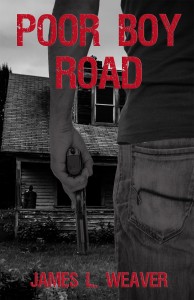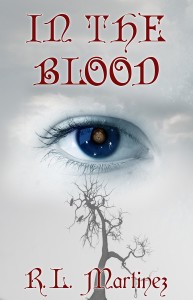Poor Boy Road is the street where Jake Caldwell, now a leg-breaker for a mafia boss, has grown up. It’s also the place he escaped from, and now, after many years, returns to in this thrilling, emotional, violent and tender story.
Initially, I was reluctant to read this – yet another macho thriller. As I feared, the book started with relentless violence in a hard criminal American environment. And yet, while the violence and general unpleasantness developed I had an odd experience: the protagonist, who was implementing the violence, interested me. Yes, he was the cliché drug-dealer-assisting tough guy, but there was more. Then, just when Jake was preparing to whack his whimpering victim’s kneecaps to useless rubble, he received a phone-call. This call was the start of Jake’s journey back to everything he left behind, and the turn that got me properly hooked.
Poor Boy Road is written mainly from Jake’s point of view, with regular changes of perspective to Willie, a small-time dealer. These different points of view not only help develop the storyline to make it both more thrilling and easier to understand, but they also offer a fascinating peek into the two characters. Jake and Willie have similar backgrounds: both were poor deprived kids in a small American town – and the author very cleverly shows the similarities and differences between the ways they were impacted by this, and how their lives unfold as a consequence of their choices.
Poor Boy Road is a hard crime thriller, with all the features of that genre. Guns, drugs, utterly immoral crime lords and their pathetic henchmen, and a significant amount of violence – it’s all there. But Poor Boy Road is more than that. The main characters have depth, and even though both Jake and Willie have done and are still doing despicable things, their personal emotional struggles are so relatable that I found myself rooting for them. I would have liked to have learned a bit more about the motivations of some of the other characters, in particular Stony, Jake’s father.
Initially I thought that the main antagonist – the drug dealer Shane – was a little too one-sidedly evil, but then I considered that it’s quite likely that he’s more realistic than I’d like to think.
A lot happens in Poor Boy Road. A wealth of characters populates several different plot lines that all intersect and impact each other, but thanks to the easy writing style and clear layout, the resulting complicated story was surprisingly easy to follow. A few plot turns were predictable, but this was not bothersome because the reactions of the characters to the events were just as interesting as the actual happenings.
It surprised me how much I enjoyed reading this book. The concept and setting don’t appeal to me, but the story the characters and particularly the easy, down-to-Earth writing style drew me in to the point that I was sad to have reached the end.
Poor Boy Road offers action, excitement and an engaging story as well as complex characters with relatable emotions and desires and an interesting, although slightly unsettling world. In spite of the uncomfortable topics that this novel deals with, it offers an easy and entertaining read. Even if, like me, you’re not usually drawn to thrillers, I’d suggest you give this one a try – you won’t regret it.











